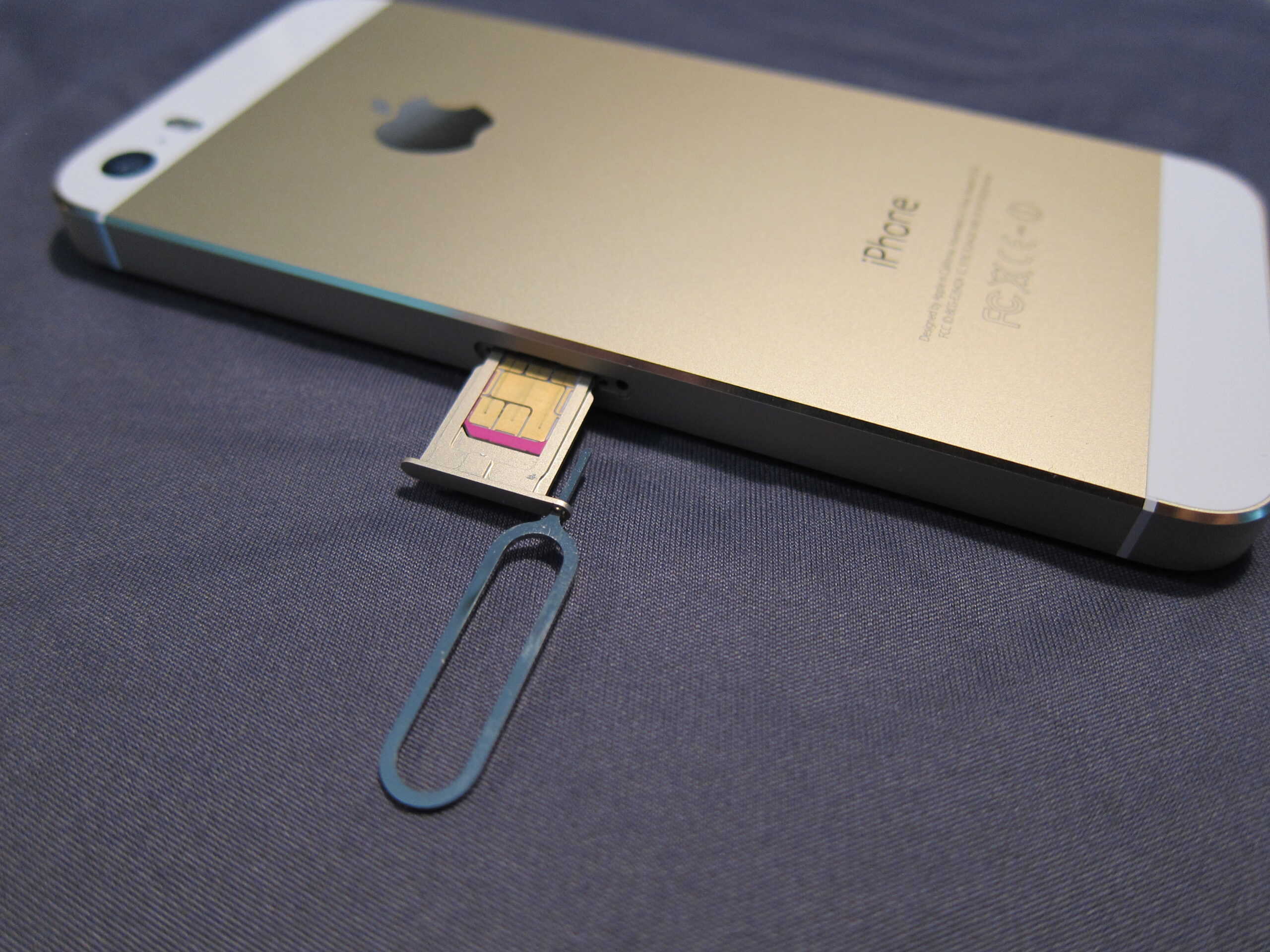What is eSIM?
eSIM, short for embedded SIM, is a revolutionary technology that is transforming the way we connect to mobile networks. Unlike traditional SIM cards, which are physical, removable chips, eSIM is embedded directly into the device, eliminating the need for a physical SIM card. This innovative approach offers a wide array of benefits and has gained significant traction in the mobile industry.
eSIM technology enables users to store multiple mobile network profiles on a single device, allowing for seamless switching between different carriers without the hassle of physically swapping SIM cards. This flexibility is particularly advantageous for frequent travelers, as it eliminates the need to acquire and install a new SIM card when entering a different country or region.
Moreover, eSIM facilitates the activation of mobile plans without the requirement of a physical SIM card. This means that users can easily sign up for a new mobile plan and activate it directly on their eSIM-compatible device, streamlining the onboarding process and enhancing user convenience.
The compact nature of eSIM also contributes to the design and functionality of modern mobile devices. By eliminating the need for a SIM card slot, manufacturers can create sleeker, more streamlined devices with additional space for other components or features.
Furthermore, eSIM technology aligns with the growing trend of IoT (Internet of Things) devices, enabling seamless connectivity for a wide range of devices beyond smartphones and tablets. This includes wearables, smart home devices, and even vehicles, fostering a more interconnected and efficient ecosystem.
Overall, eSIM represents a significant leap forward in mobile connectivity, offering users unparalleled convenience, flexibility, and efficiency. As the technology continues to gain momentum, it is poised to become the standard for mobile connectivity, revolutionizing the way we engage with mobile networks.
Benefits of using eSIM on Pixel 6
The Pixel 6, Google's flagship smartphone, harnesses the power of eSIM technology to deliver a host of compelling benefits to users. By embracing eSIM functionality, Pixel 6 users can experience a new level of convenience, flexibility, and connectivity. Here are the key advantages of utilizing eSIM on the Pixel 6:
1. Enhanced Flexibility
eSIM empowers Pixel 6 users to effortlessly switch between mobile carriers without the need to physically swap SIM cards. This flexibility is particularly advantageous for individuals who frequently travel internationally or require access to multiple mobile networks. With eSIM, users can seamlessly activate and switch between different mobile plans, ensuring optimal connectivity wherever they go.
2. Streamlined Activation Process
The Pixel 6's eSIM capability simplifies the process of activating a new mobile plan. Users can conveniently sign up for a new plan and activate it directly on their device, eliminating the traditional requirement of obtaining and inserting a physical SIM card. This streamlined activation process enhances user convenience and expedites the onboarding experience for new mobile subscribers.
3. Space-Saving Design
By integrating eSIM technology, the Pixel 6 achieves a more streamlined and compact design. The absence of a physical SIM card slot allows for a sleeker device profile and creates additional space for other essential components. This space-saving design not only enhances the aesthetic appeal of the Pixel 6 but also contributes to its overall functionality and performance.
4. Seamless Connectivity for IoT Devices
eSIM extends beyond traditional smartphones, offering seamless connectivity for a diverse range of IoT devices. With the Pixel 6's eSIM support, users can easily connect and manage IoT devices such as smartwatches, tablets, and other compatible gadgets. This interconnected ecosystem enables users to stay connected across various devices, fostering a more integrated and efficient digital experience.
5. Environmental Sustainability
The adoption of eSIM aligns with sustainable practices by reducing the reliance on physical SIM cards, which often contribute to electronic waste. By embracing eSIM technology, Pixel 6 users actively participate in minimizing the environmental impact associated with traditional SIM card production and disposal, contributing to a more sustainable and eco-friendly approach to mobile connectivity.
In summary, the Pixel 6's integration of eSIM technology brings forth a myriad of benefits, including enhanced flexibility, streamlined activation processes, space-saving design, seamless IoT connectivity, and environmental sustainability. This innovative approach to mobile connectivity underscores Google's commitment to delivering a cutting-edge and user-centric experience with the Pixel 6.
How to set up eSIM on Pixel 6
Setting up eSIM on your Pixel 6 is a straightforward process that empowers you to seamlessly activate mobile plans and enjoy the benefits of flexible connectivity. Here's a comprehensive guide to help you navigate through the setup process:
1. Accessing eSIM Settings
To initiate the eSIM setup on your Pixel 6, start by accessing the device's settings. Navigate to the "Settings" app, and then select "Network & internet" to proceed to the next step.
2. Selecting Mobile Network
Within the "Network & internet" settings, tap on "Mobile network" to access the mobile network configuration options. Here, you will find the "Carrier" section, which typically displays the currently active SIM card or network. Look for the option to add a new network or SIM profile, often labeled as "Add carrier" or "Add cellular plan."
3. Scanning QR Code or Manual Entry
When prompted to add a new carrier or cellular plan, you will have the option to either scan a QR code provided by your mobile carrier or manually enter the details of the eSIM activation. If your carrier provides a QR code for eSIM activation, simply use the Pixel 6's camera to scan the QR code, initiating the eSIM setup process automatically. Alternatively, if manual entry is required, input the necessary details, including the activation code or specific eSIM details provided by your mobile carrier.
4. Completing Activation
Once the eSIM details have been scanned or entered, follow the on-screen prompts to complete the activation process. This typically involves verifying the eSIM profile details and confirming the activation with your mobile carrier. Upon successful activation, your Pixel 6 will seamlessly integrate the eSIM profile, enabling you to utilize the new mobile plan without the need for a physical SIM card.
5. Managing eSIM Profiles
After setting up your eSIM on the Pixel 6, you can manage multiple eSIM profiles directly from the device settings. This allows you to switch between different mobile plans or carriers with ease, providing unparalleled flexibility and convenience.
By following these steps, you can efficiently set up eSIM on your Pixel 6, unlocking the full potential of this innovative technology and embracing a new era of mobile connectivity.
This comprehensive guide empowers Pixel 6 users to leverage the advantages of eSIM technology, streamlining the activation process and enhancing the overall mobile experience.
Managing multiple eSIM profiles
Managing multiple eSIM profiles on your Pixel 6 provides unparalleled flexibility and convenience, allowing you to seamlessly switch between different mobile plans or carriers based on your specific needs. This feature empowers users to maintain multiple eSIM profiles on a single device, offering a level of versatility that was previously unattainable with traditional SIM cards.
To manage multiple eSIM profiles on your Pixel 6, begin by accessing the device's settings and navigating to the "Network & internet" section. Within the "Mobile network" settings, you will find the option to manage eSIM profiles, typically labeled as "Manage eSIM profiles" or a similar designation.
Upon entering the eSIM profile management interface, you will be presented with a list of the existing eSIM profiles stored on your Pixel 6. Each profile will be associated with a specific mobile carrier or plan, allowing you to easily identify and differentiate between the available options.
From the eSIM profile management interface, you can perform various actions to effectively manage and utilize multiple eSIM profiles. These actions may include:
-
Switching Between Profiles: The ability to seamlessly switch between different eSIM profiles is a fundamental aspect of managing multiple eSIM profiles. By selecting the desired eSIM profile from the list, you can promptly switch to the corresponding mobile plan or carrier, ensuring uninterrupted connectivity based on your preferences or geographical location.
-
Renaming Profiles: To enhance organization and clarity, you can rename eSIM profiles to reflect the associated mobile carrier or plan. This customization allows for easy identification and selection of specific eSIM profiles, streamlining the user experience when managing multiple profiles.
-
Setting Default Profiles: If you have a primary mobile plan or carrier that you frequently use, you can designate it as the default eSIM profile. This ensures that your Pixel 6 prioritizes the default profile for connectivity, simplifying the process of managing multiple eSIM profiles and optimizing your preferred usage scenario.
-
Removing Unused Profiles: Over time, you may accumulate multiple eSIM profiles based on your mobile usage patterns. To declutter and streamline your eSIM profile list, you can remove any unused or redundant profiles, maintaining a concise and organized selection of eSIM options.
By proficiently managing multiple eSIM profiles on your Pixel 6, you can harness the full potential of eSIM technology, leveraging its inherent flexibility and adaptability to suit your dynamic connectivity requirements. This capability empowers users to seamlessly navigate between different mobile plans or carriers, ensuring optimal connectivity and convenience in various scenarios.
The ability to manage multiple eSIM profiles represents a pivotal aspect of eSIM technology, aligning with the modern demand for versatile and user-centric mobile connectivity solutions. As eSIM adoption continues to expand, the management of multiple eSIM profiles on devices such as the Pixel 6 underscores the evolution of mobile connectivity, offering users unprecedented control and customization over their network preferences.
Troubleshooting common eSIM issues
As with any technology, eSIM functionality on the Pixel 6 may encounter occasional issues that can impact the user experience. Understanding and effectively troubleshooting common eSIM issues is essential for ensuring seamless connectivity and optimal performance. Here are some common eSIM issues and troubleshooting steps to address them:
1. Activation Failures
When attempting to activate an eSIM profile, users may encounter activation failures, preventing the successful integration of the new mobile plan. To troubleshoot this issue, ensure that the provided eSIM activation code or QR code is accurate and valid. If activation continues to fail, contact your mobile carrier's customer support to verify the activation details and resolve any potential discrepancies.
2. Connectivity Issues
In some instances, users may experience connectivity issues with their eSIM, such as intermittent network access or limited signal strength. To address connectivity issues, verify that the eSIM profile is correctly configured and activated. Additionally, ensure that the device's network settings are optimized for eSIM usage, and consider restarting the device to refresh the network connection.
3. Profile Switching Errors
When attempting to switch between multiple eSIM profiles, users may encounter errors or delays in profile switching. To troubleshoot this issue, ensure that the device's eSIM profile management interface is functioning correctly. Restarting the device or reseating the eSIM profile may help resolve profile switching errors and restore seamless profile transitions.
4. Compatibility Concerns
In rare cases, compatibility concerns may arise when attempting to activate an eSIM profile from a specific mobile carrier. If compatibility issues persist, verify that the mobile carrier supports eSIM activation for the Pixel 6 and that the provided eSIM details align with the device's requirements. Contact the mobile carrier for further assistance in resolving compatibility concerns.
5. Network Registration Errors
Users may encounter network registration errors when attempting to connect to a mobile network using the eSIM. To troubleshoot network registration errors, ensure that the device's network settings are configured accurately for eSIM usage. Additionally, verify that the eSIM profile has been activated and is functioning correctly, and consider resetting the network settings if persistent registration errors occur.
By addressing these common eSIM issues through effective troubleshooting, Pixel 6 users can mitigate potential connectivity disruptions and optimize their eSIM experience. If persistent issues arise, reaching out to Google's support channels or the respective mobile carrier's customer support can provide further assistance in resolving complex eSIM-related challenges.



















